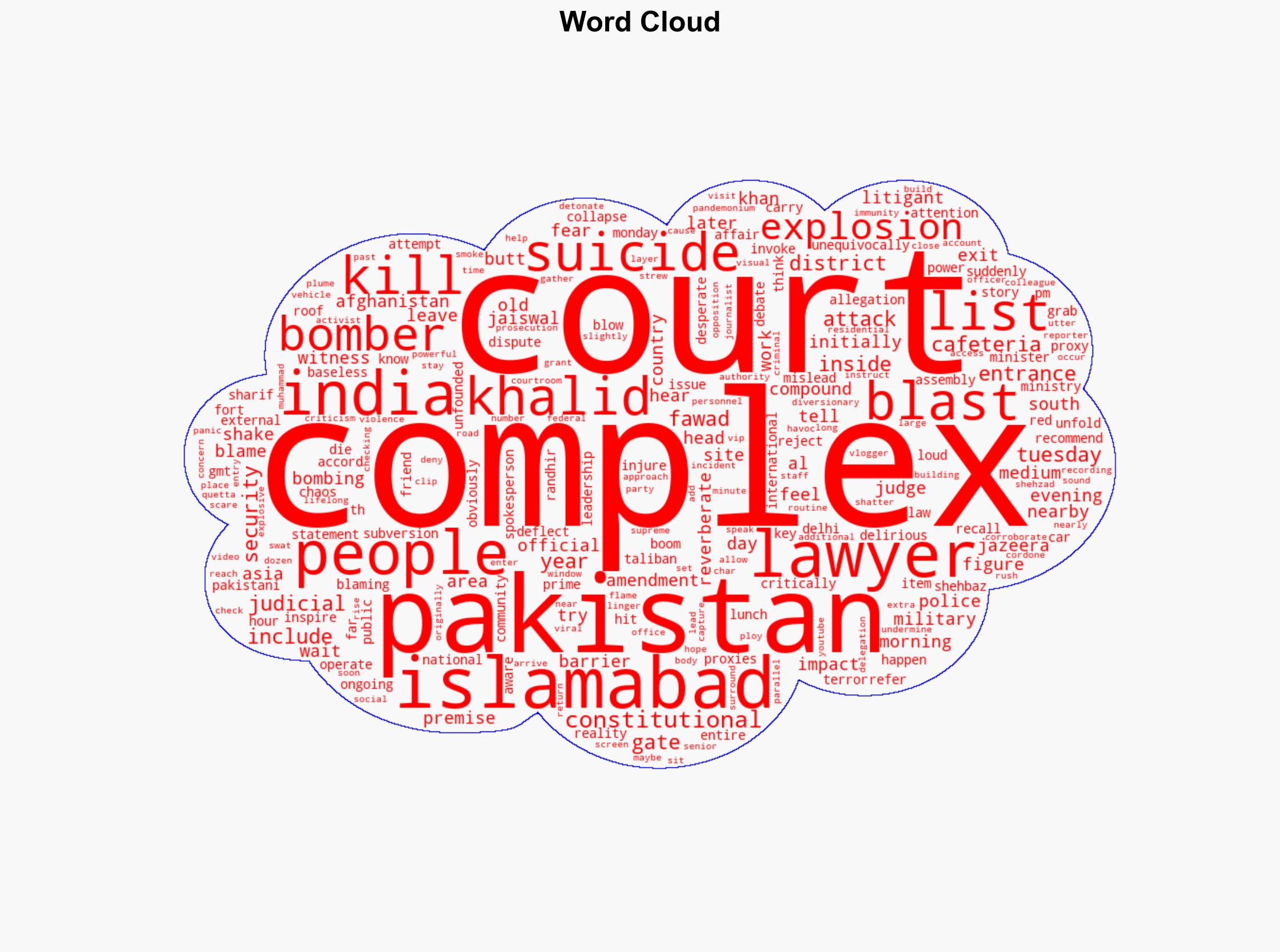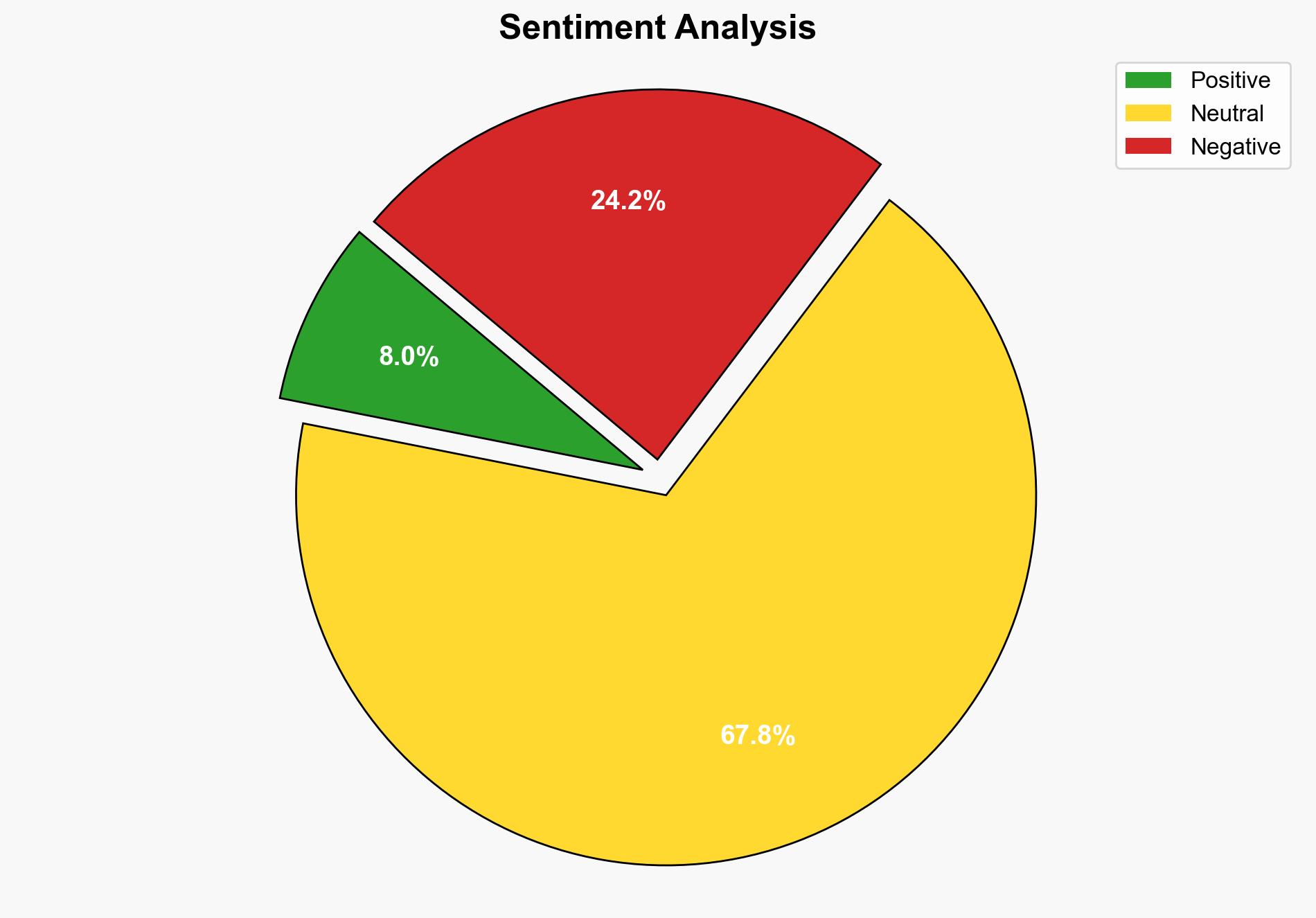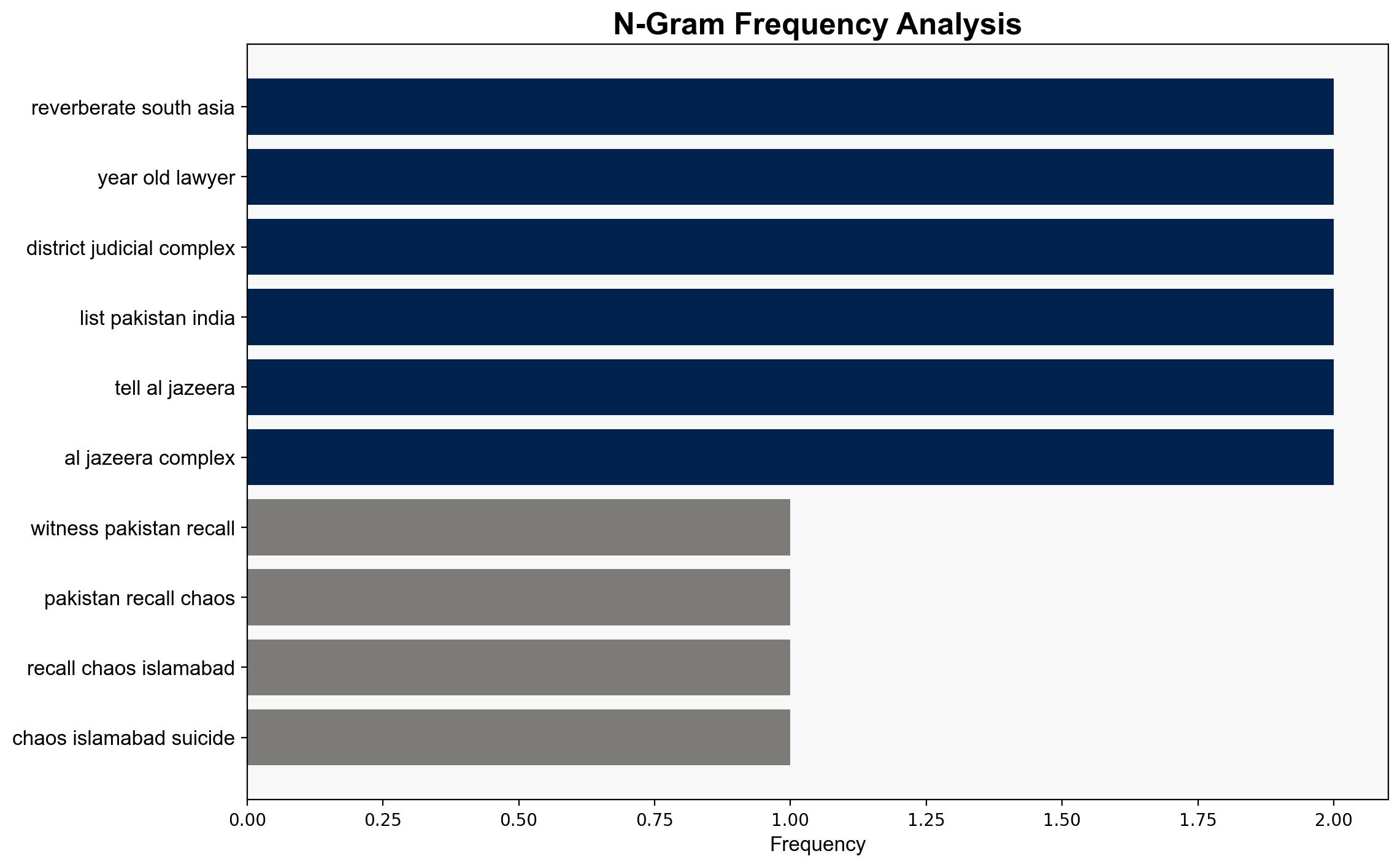Utter pandemonium Witnesses recall chaos after Islamabad suicide bombing – Al Jazeera English
Published on: 2025-11-12
AI-powered OSINT brief from verified open sources. Automated NLP signal extraction with human verification. See our Methodology and Why WorldWideWatchers.
Intelligence Report: Utter pandemonium Witnesses recall chaos after Islamabad suicide bombing – Al Jazeera English
1. BLUF (Bottom Line Up Front)
The most supported hypothesis is that the Islamabad suicide bombing is part of a broader strategy by non-state actors, potentially supported by foreign entities, to destabilize Pakistan and exploit regional tensions. Confidence Level: Moderate. Recommended action includes increased intelligence sharing with regional allies and enhanced security measures at critical infrastructure and public venues.
2. Competing Hypotheses
Hypothesis 1: The attack was orchestrated by non-state actors with potential support from foreign entities, aiming to destabilize Pakistan and exploit regional tensions.
Hypothesis 2: The attack was a result of internal political strife within Pakistan, potentially orchestrated by factions seeking to influence constitutional amendments or power dynamics.
Hypothesis 1 is more likely due to the historical context of cross-border terrorism and the strategic interests of destabilizing Pakistan. Hypothesis 2, while plausible, lacks direct evidence linking the attack to internal political motives.
3. Key Assumptions and Red Flags
Assumptions: The assumption that external actors have the capability and intent to support such attacks is based on historical precedents. The assumption that internal factions lack the operational capacity for such an attack is a potential bias.
Red Flags: The immediate blame on India by Pakistan’s leadership could indicate a knee-jerk reaction or a diversionary tactic. The denial by India and the narrative of deflection suggest potential deception or misdirection.
4. Implications and Strategic Risks
The attack could escalate regional tensions, particularly between Pakistan and India, potentially leading to diplomatic standoffs or military posturing. There is a risk of retaliatory actions or proxy conflicts. Domestically, the attack could exacerbate political instability and undermine public confidence in government security measures.
5. Recommendations and Outlook
- Enhance intelligence sharing with regional allies, particularly Afghanistan and India, to monitor and counteract cross-border terrorism.
- Strengthen security protocols at critical infrastructure and public venues to prevent future attacks.
- Best-case scenario: Regional cooperation leads to the identification and neutralization of the responsible networks, reducing tensions.
- Worst-case scenario: Escalation of hostilities between Pakistan and India, potentially leading to military conflict.
- Most-likely scenario: Continued low-intensity conflicts and diplomatic tensions, with sporadic attacks by non-state actors.
6. Key Individuals and Entities
Prime Minister Shehbaz Sharif, Khalid Khan, Fawad Khan, Randhir Jaiswal.
7. Thematic Tags
National Security Threats
Structured Analytic Techniques Applied
- Cognitive Bias Stress Test: Expose and correct potential biases in assessments through red-teaming and structured challenge.
- Bayesian Scenario Modeling: Use probabilistic forecasting for conflict trajectories or escalation likelihood.
- Network Influence Mapping: Map relationships between state and non-state actors for impact estimation.
Explore more:
National Security Threats Briefs ·
Daily Summary ·
Methodology





